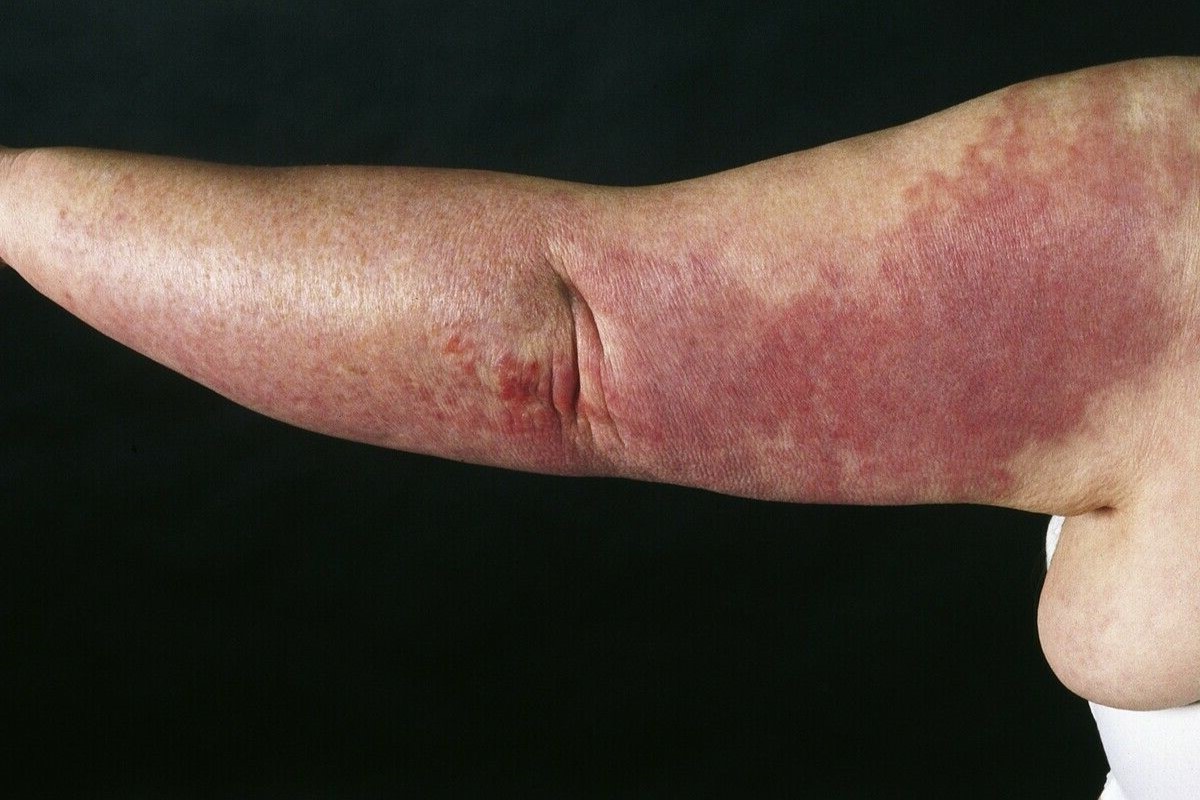
Lymphangitis Carcinomatosa is a serious condition where cancer spreads to the lymphatic system, causing inflammation. First described in 1829, it often arises from cancers like breast, lung, stomach, pancreas, and prostate. This condition can lead to severe respiratory issues, including cough and dyspnea. Diagnosing it usually involves high-resolution CT scans showing thickened bronchovascular bundles and interlobular septa. Historically, patients had a life expectancy of about six months, but advancements in treatment have improved survival rates. Despite these improvements, the prognosis remains poor, making symptom management and palliative care crucial for affected individuals.
Key Takeaways:
- Lymphangitis carcinomatosa is a serious condition where cancer spreads to the lymphatic system, causing inflammation. It often leads to severe symptoms and a challenging prognosis, but improved treatments have extended survival for some patients.
- Common causes of lymphangitis carcinomatosa include breast, lung, stomach, pancreas, and prostate cancers. Understanding these causes helps in early diagnosis and management, offering hope for improved outcomes through better treatments.
What is Lymphangitis Carcinomatosa?
Lymphangitis carcinomatosa is a serious condition where cancer spreads to the lymphatic system, causing inflammation. This often leads to severe symptoms and a challenging prognosis.
-
Definition: Lymphangitis carcinomatosa involves inflammation of lymph vessels due to cancer. It signifies metastatic cancer affecting the lymphatic system.
-
History: Pathologist Gabriel Andral first described this condition in 1829 in a patient with uterine cancer. Troisier and Reynaud detailed its anatomy and histopathology in 1874.
Common Causes of Lymphangitis Carcinomatosa
Various cancers can lead to lymphangitis carcinomatosa. Understanding these causes helps in early diagnosis and management.
-
Common Causes: Breast, lung, stomach, pancreas, and prostate cancers are frequent culprits. The mnemonic "Certain Cancers Spread By Plugging The Lymphatics" helps remember these: cervical, colon, stomach, breast/bronchiogenic, pancreatic, thyroid, and laryngeal cancers.
-
Pathology: Typically, tumor cells spread along the lymphatics. In about 20% of cases, a tumor blocks lymph drainage, causing inflammation. In the lung, a central mass near the hilum often blocks drainage.
Radiological Findings and Prognosis
Radiological findings are crucial for diagnosing lymphangitis carcinomatosa. Prognosis varies but has improved with better treatments.
-
Radiological Findings: High-resolution CT scans reveal thickening of bronchovascular bundles, fissures, and interlobular septae. These changes help in diagnosing the condition.
-
Prognosis: Historically, life expectancy was about six months. Improved treatments have extended survival, with some patients living three or more years.
Clinical Features and Diagnostic Evaluation
Recognizing clinical features and conducting proper diagnostic evaluations are essential for managing lymphangitis carcinomatosa.
-
Clinical Features: Common symptoms include cough and dyspnea. The condition can also cause chronic diffuse infiltrative lung disease, affecting pulmonary interstitial tissue.
-
Diagnostic Evaluation: Diagnosis relies on radiological findings, especially CT scans showing interstitial patterns. Histological confirmation may be needed in some cases.
Treatment Options and Pulmonary Lymphangitic Carcinomatosis
Treatment focuses on symptom management and improving quality of life. Pulmonary lymphangitic carcinomatosis is a common form of this condition.
-
Treatment Options: Treatment is largely palliative, aiming to manage symptoms and improve quality of life. Chemotherapy may help manage symptoms and extend survival.
-
Pulmonary Lymphangitic Carcinomatosis: This is the most common form, representing malignancy spreading through pulmonary interstitial lymphatics. It often occurs in advanced-stage cancers.
Associations with Various Cancers
Different cancers are associated with lymphangitis carcinomatosa. Each type presents unique challenges and symptoms.
-
Breast Cancer Association: Breast cancer frequently causes lymphangitis carcinomatosa, leading to significant morbidity and mortality.
-
Lung Cancer Association: Lung cancer often presents with lymphangitis carcinomatosa in advanced stages, complicating management.
-
Stomach Cancer Association: Stomach cancer, especially the diffuse type, is linked to this condition, presenting with severe respiratory symptoms and poor prognosis.
-
Pancreatic Cancer Association: Pancreatic cancer can cause lymphangitis carcinomatosa, often presenting with advanced disease and poor survival rates.
-
Prostate Cancer Association: Prostate cancer is less commonly associated but can still lead to significant morbidity and mortality.
Age Distribution and Survival Rates
Understanding the age distribution and survival rates helps in managing expectations and planning treatment.
-
Age Distribution: Most patients are between 40 and 49 years old, though it can occur in a broader age range depending on the primary cancer.
-
Survival Rates: Historically, survival was about six months. With advancements, some patients now survive three or more years.
Symptoms and Radiological Patterns
Recognizing symptoms and radiological patterns is crucial for early diagnosis and management.
-
Symptoms: Common symptoms include cough, dyspnea, and chronic diffuse infiltrative lung disease. The condition can also cause respiratory insufficiency and pulmonary hypertension.
-
Radiological Patterns: Radiological patterns include thickening of bronchovascular bundles, interlobular septae, and secondary pulmonary lobules. High-resolution CT scans are key for diagnosis.
Histopathological Correlation and Clinical Presentation
Histopathological correlation with radiological findings confirms the diagnosis. Clinical presentation varies widely.
-
Histopathological Correlation: Histopathological findings confirm the diagnosis, showing malignant cell infiltration in lymphatic vessels.
-
Clinical Presentation: Presentation varies depending on the primary cancer, but respiratory symptoms like cough and dyspnea are common.
Management Challenges and Case Reports
Managing lymphangitis carcinomatosa is challenging due to its advanced nature. Case reports highlight these complexities.
-
Management Challenges: Management focuses on symptom relief and improving quality of life due to the condition's advanced nature and poor prognosis.
-
Case Reports: Case reports describe the gradual onset of symptoms and the importance of considering malignancy in patients with respiratory insufficiency.
Prognostic Implications and Future Research Directions
Prognosis remains poor, but future research holds promise for better management strategies.
-
Prognostic Implications: Prognosis is generally poor, but improved treatments have extended survival for some patients. Palliative care is crucial in the management plan.
-
Future Research Directions: Future research aims to explore new diagnostic techniques, improve treatments, and understand the molecular mechanisms. This could lead to better management strategies and outcomes.
Final Thoughts on Lymphangitis Carcinomatosa
Lymphangitis carcinomatosa is a serious condition marked by the spread of cancer cells into the lymphatic system, causing inflammation and blockage. Often linked to advanced stages of cancers like breast, lung, stomach, pancreas, and prostate, it presents with symptoms like cough and dyspnea. Diagnosis relies heavily on radiological findings, especially CT scans, and sometimes requires histological confirmation. Treatment focuses on symptom management and improving quality of life, though the prognosis remains poor. Historically, life expectancy was around six months, but advancements in treatment have extended survival rates for some patients. Understanding its clinical features, diagnostic methods, and treatment options is crucial for providing optimal care. Ongoing research aims to improve management strategies and outcomes for those affected by this condition.
Frequently Asked Questions
Was this page helpful?
Our commitment to delivering trustworthy and engaging content is at the heart of what we do. Each fact on our site is contributed by real users like you, bringing a wealth of diverse insights and information. To ensure the highest standards of accuracy and reliability, our dedicated editors meticulously review each submission. This process guarantees that the facts we share are not only fascinating but also credible. Trust in our commitment to quality and authenticity as you explore and learn with us.


